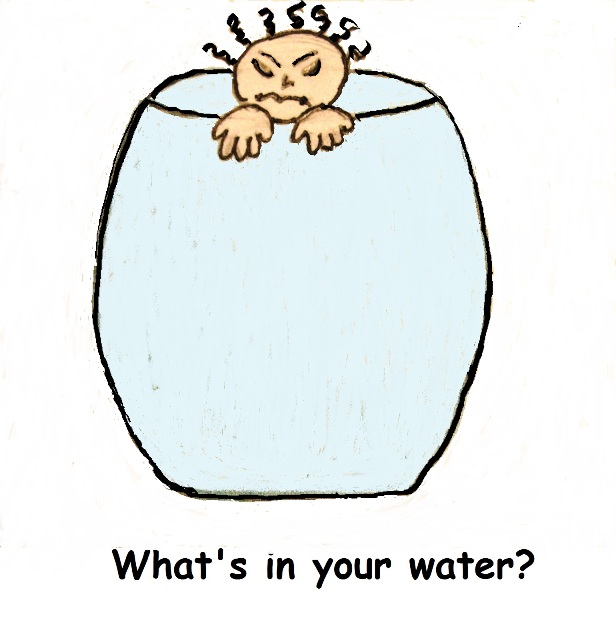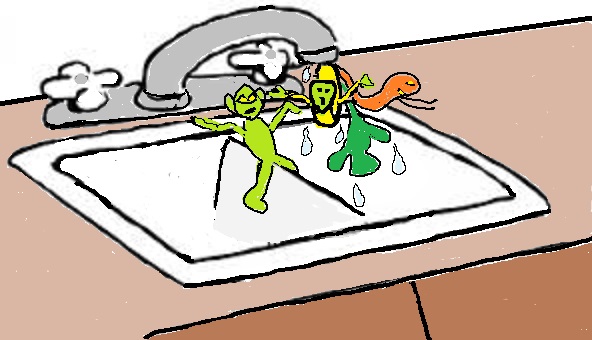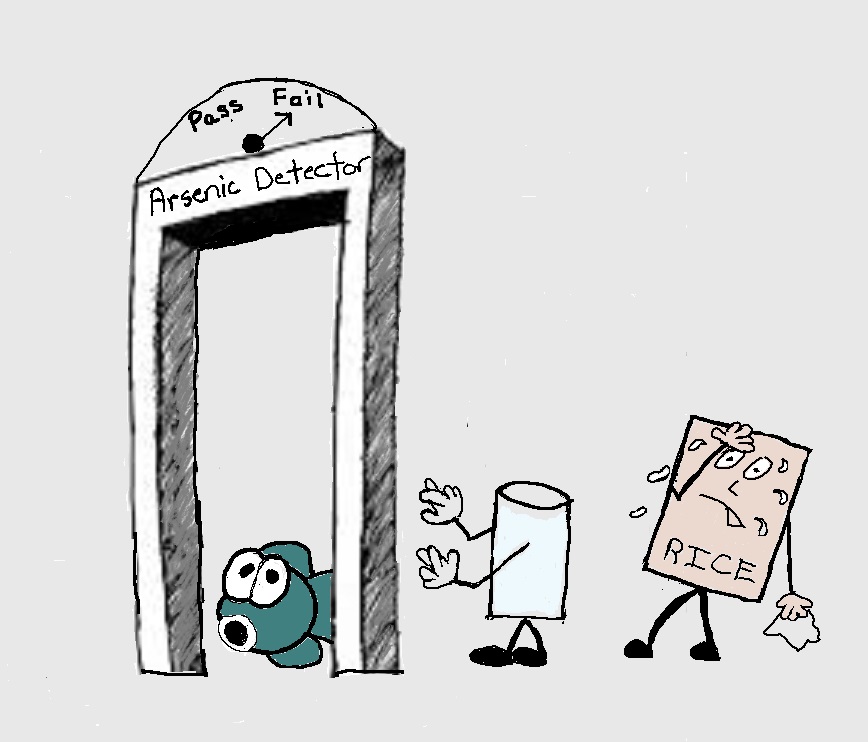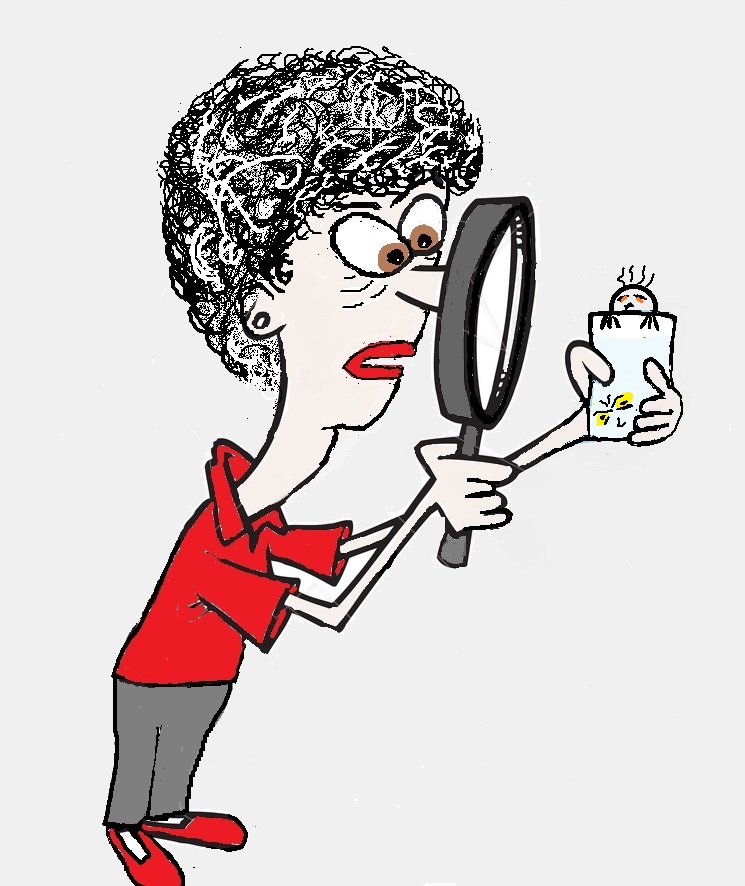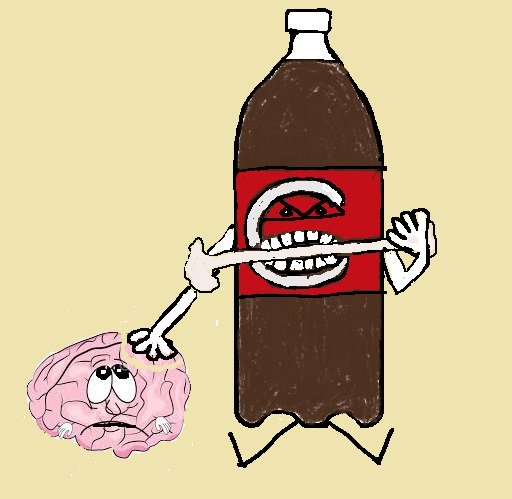- Home
- Toxic Chemicals in Food
- Drinking Water
Drinking Water Quality and Your Health
Drinking water quality is a serious, worldwide health
issue. Water is essential to life and clean water is essential to your health. You can protect your health by educating yourself about the toxins in your water and the steps to take to remove them.
Summary
- Drinking water issues include pesticides, disinfection byproducts, industrial chemicals and emerging contaminants.
- The legal limits set by the EPA for regulated water contaminants are often inadequate to protect health.
- Many of the contaminants found in drinking water are unregulated.
- The switch from chlorine to chloramine disinfection by water treatment plants has created a new, entirely unregulated and highly toxic group of disinfection byproducts, including the cancer-causing nitrosamines.
- The dirtier the source water the more disinfection products are formed.
- To protect your health, take steps to find out what’s in your water.
- Identify the best filtering option to remove the contaminants in your drinking water.
Contamination of Drinking Water Supplies
What do pesticides, pills and PFOA have in common? They can all be found in your drinking water, whether it comes from a public water supplier or a private well.
Chemical contaminants enter water from a bunch of different sources. Everything from manufacturing, fracking, farming and sewage treatment plants to runoff from urban and suburban areas can impact water quality.
Nothing concerns me more than water quality. It is a serious issue because water is essential to life. Plus, most people eat a varied diet but you drink the same water every day. This may result in long term exposure to some nasty toxins.
I’m going to be throwing a lot of stats at you so bear with me. This is a complicated subject that I could easily write several books about.
Water, Water Everywhere and Not a Clean Drop to Drink
The water you drink comes from two sources, groundwater, accessed through wells and springs, and surface water that is pumped from rivers, lakes and reservoirs into water treatment plants.
If you are connected to a public water system, the EPA regulates about 90 of a possible 600 plus toxins that could be in your water. The FDA regulates the same 90 toxins in bottled water.
It's important to mention that the EPA sets its safety standards for this small number of potential contaminants based on a 175 lb. male drinking water with only one chemical
present. So what about us smaller folks? Or the mixtures of chemicals that are present in our water?
Also, not every water supplier tests for the same number of contaminants. The EWG's five year survey of public water suppliers found that 35% of utilities test for 50-100 contaminants and 25% test for fewer than 25.
While most water suppliers do comply with legal limits based on yearly averages, there may be unsafe short term spikes. Plus, legal limits are often higher than recommended limits to protect health.
In other words, drinking water from a public system does not ensure you won't be exposed to water contaminants. While it lowers the risk of exposure for some toxins, it raises the risk for others.
The Environmental Working Group (EWG) analyzed data from public water suppliers across the U.S. from 2004-2009 and found the following types of contaminants were in drinking water:
- 97 agricultural pollutants, including pesticides and chemicals from fertilizer- and manure-laden runoff
- 204 industrial chemicals from factory discharges and consumer products
- 86 contaminants linked to sprawl and urban areas or from polluted runoff and wastewater treatment plants
- 42 pollutants that are byproducts of the water treatment processes or that leach from pipes and storage tanks.
- 150 drinking water pollutants exceeded health standards and guidelines.
- A total of 252 million Americans were supplied at one time or another with water containing contaminants at concentrations above the recommended safety guidelines.
Types of Water Contaminants
Whether your drinking water comes from a private well or a public water system, the same types of water contaminants may be present. Some of the specific chemicals that may be in your drinking water can vary from month to month and year to year. Others may be a recurrent problem. In general they fall under the following categories of contaminants.
Pesticides
Every year the USDA analyzes pesticide residues on fruits and vegetables and in public and private water supplies. In its most recent sampling it found:
- 59 different residues, representing 48 pesticides, in the finished drinking water
- 74 different residues representing 61 pesticides, in the untreated intake water
- 51 different residues representing 40 pesticides, in the well water samples
|
According to the USDA – |
Atrazine, an endocrine-disrupting herbicide used on corn, sugarcane and sorghum, was found in 88% of both treated and untreated samples that the USDA tested. The EWG found that 17 million people in 28 states are exposed to unsafe levels of atrazine. |
Disinfection Byproducts
(If your water comes from a private well you can skip this section because disinfection byproducts are not a water quality issue for you.)
Cleaning water to make it drinkable can result in the formation of more than 700 harmful, DNA-damaging or cancer-causing byproducts. These byproducts form when disinfectants (chlorine, chloramines, chlorine dioxide) react with organic pollution from agriculture or urban and sprawl runoff.
The EPA requires testing for only 11 of these. The two groups of disinfection byproducts that are tested for are Trihalomethanes and Haloacetic Acids.
These chemicals are volatile organic compounds (VOCs), which means in addition to drinking them, you also inhale them as a gas. The gases are released from toilet bowls, bathtubs and during showers.
|
Trihalomethanes (aka chloroform, bromodichloromethane, dibromochloromethane, bromoform). Exposure to trihalomethanes in drinking water has been linked to liver, kidney or central |
Haloacetic Acids (dichloroacetic acid, trichloroacetic acid, monochloroacetic acid, monobromoacetic acid and dibromoacetic acid). These disinfection byproducts are probable carcinogens and can cause mutations and DNA damage. |
|
The EWG's 5 year survey found 42 chemical byproducts of water disinfection, in water supplied to 237 million people in 45 states. |
In 2011 EWG analyzed water quality data from 201 water suppliers around the country and found that 168 reported levels of trihalomethanes that were high enough to double the risk of bladder cancer in consumers. |
Industrial Chemicals
Industrial chemicals that impact your water quality come from a variety of sources, including plastic manufacturing plants and fracking. Some are regulated, such as vinyl chloride, used to make PVC plastic. Many of them are unregulated and are showing up more often in drinking water, which would put them in the next category, emerging chemical contaminants.
|
In my home state, 47 of the |
Vinyl chloride has been detected at unsafe levels in the drinking water in 27 states. This chemical is a carcinogen, and a reproductive, developmental and
neurotoxin. |
Emerging Chemical Contaminants
Emerging chemical contaminants are toxins that are unregulated but are showing up more often in drinking water. Water supplies are becoming contaminated with pharmaceuticals, nanoparticles, consumer products (such as sunscreens), unregulated disinfection byproducts, and other contaminants, such as phthalates and PFOA.
For example, many water suppliers have switched from chlorine to chloramines to disinfect water. This has lead to the formation of new classes of disinfection byproducts. These emerging and unregulated contaminants are significantly more genotoxic (causes genetic mutations) and cytotoxic (causes cell death) than the currently regulated disinfection byproducts.
Also, drinking water now rivals food as a source of exposure to perfluorinated chemicals, such as PFOA and PFOS. Exposure to even relatively low concentrations of PFOA in drinking water results in elevated body burdens that may increase the risk of health effects.
|
Among
the unregulated contaminants |
Bromochloroacetic acid, an unregulated tap water disinfection byproduct, was found in the water supplied to 40 million people in 19 states. It induces gene mutations and is associated with damage to DNA |
Arsenic
Arsenic deserves to be singled out as a water contaminant. It is a Class 1 carcinogen and enters water from a variety of sources. These include mining runoff, erosion of natural deposits, emissions from glass and electronics processing and the use of arsenical compounds as wood preservatives and pesticides.
Western states and New England have the highest reported levels of arsenic in drinking water. This is because the underlying bedrock in states such as New Hampshire and Nevada contain a lot of arsenic.
Long-term exposure to low levels of arsenic has been associated with lung, liver,skin, kidney and bladder cancer, heart disease and diabetes.
|
EWG found that 113 million people in 43 states are exposed to unsafe levels of arsenic. Arsenic is a known carcinogen that has also been linked to heart disease and diabetes. | |
|
In New Hampshire, which has the highest bladder cancer rate in the country, 20 percent of private wells have elevated levels of arsenic. A Dartmouth College study conservatively estimated that 65% of bladder and lung cancer cases could have been avoided by treating arsenic contaminated well water. |
The Steps to Take to Clean Up Your Water
While the health benefits of drinking enough water are well known, the health risks of drinking chemically contaminated water are also well known. Filtering your water will improve your water quality and protect your health.
But don’t assume that because you have a filtering system that it is the right filtering system for your water, and that it is protecting you from the toxins in your water. Take the following steps to ensure your using the right filtering system to protect your health from water contamination.
1. Investigate the Current Drinking Water Issues Where You Live.
The first place to start if you're connected to a public system is your water supplier. Under the Consumers Right to Know Act water suppliers must make public what they have found in your water. This information will be in their Consumer Confidence Report.
Well owners can access these reports on the water company’s website. Find the closest one to where you live and read their report.
For help on deciphering your Consumer Confidence Report check out www.nsf.org
2. Identify Trends in Your Water Quality.
To really get a complete picture of the possible contaminants in your water, it's important to look at several years worth of reports. There are two great sources for this information that will make it easy to look at the safety of your water supply.
EWG's Tap Water database includes the water quality reports of most suppliers from 2010-2015. Just enter your zip code to find all the suppliers in your area. Then click on the ones closest to you and read the report summaries.
If you click on the State Reports tab you'll find a great overview of the water contaminants found in your state. To get more information on the specific contaminants you find use the Chemical Contaminants tab. There you'll find information on the health effects of the chemicals.
A second search option is EPA.gov's database of water company violations. You can choose a city, state or county to search for the number of violations your water supplier has currently and in the last 3 years. Additional information on well water quality can also be found on the EPA website.
After you've identified the contaminants that are an issue in your area you can chose to have your water tested to be sure. Check with your state for certified water testing lab and be sure to tell the lab exactly what you want them to test for.
Once you've identified the possible contaminants in your water it's time to find the right filtering system.
3. Research Filtering Options
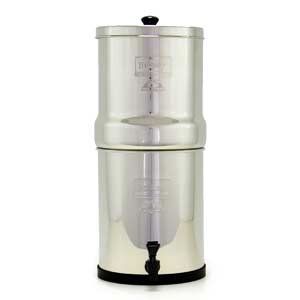
No filtering system will remove everything that could be in your water. But let’s say you find after doing some research that the pesticide atrazine, which the EPA regulates, is a problem in your water. Make sure that your filtering system is rated to remove atrazine.
If you drinking water comes from a public water company chances are very good that disinfection byproducts will be a water quality issue. You should use some form of carbon filtration designed to reduce exposures to trihalomethanes, haloacetic acids and other water treatment contaminants. A shower filter will also reduce exposure to the VOCs from these disinfection byproducts.
After researching the drinking water issues in my area I decided to filter my well water with a Big Berkey gravity pitcher. I like to keep things simple and this system is about the easiest way to filter water.
The system is stainless steel and each filter is good for 3,000 gallons. So a two-filter system like I have will filter 6,000 gallons. If they get clogged you just scrub them with a brush to unclog.
Plus, based on what I need to filter out, the system is more than adequate. And for those of you worried about disinfection byproducts, independent testing showed it removes 98% of these dangerous chemicals.
Although they are the most expensive counter top systems you won’t have to constantly replace plastic filters for your plastic water jug. Info on the specific contaminants the system removes can be found on the Berkey website.
A good resource for finding the right filter for your needs is the The Public Health and Safety Organization's (NSF) list of certified water filtering systems.
Common contaminants found in our drinking water include microorganisms, nitrates and nitrites, arsenic, disinfection byproducts, and pesticides. You drink water from the same source every day, resulting in long-term exposure to some dangerous chemicals. Educating yourself about water contaminants and filtering your water to remove as many toxins as possible is an important way to protect your health.
If you need help researching the water quality issues where you live, email me or leave a comment and I'll be happy to help you out.
